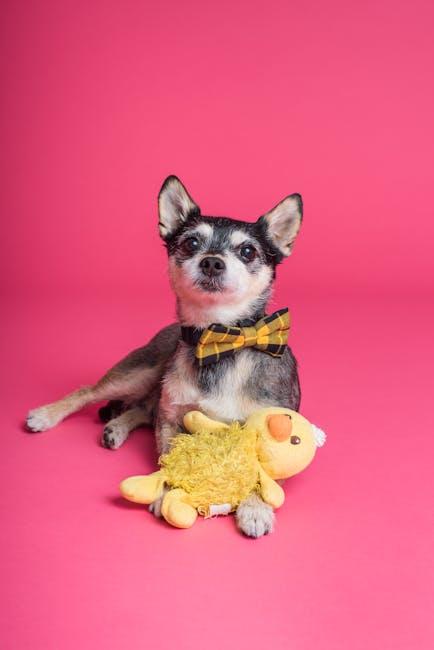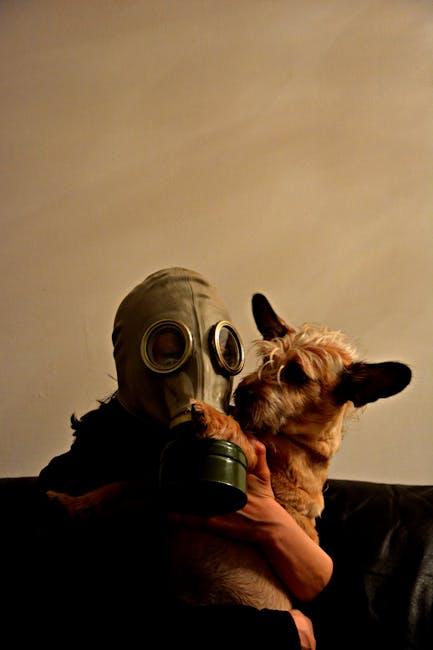Introducing toys to a fearful dog can be a delicate yet rewarding process, one that requires patience, understanding, and a touch of creativity. Many dogs may carry apprehensions due to past experiences or simply because they are unfamiliar with the joy and enrichment that toys can bring. As a caring pet owner, your role is to gently guide them toward discovery, ensuring that their journey is filled with safety and trust. In this article, we will explore compassionate strategies to help your nervous pup embrace playtime, transforming fear into joy and creating a stronger bond between you and your four-legged friend. Whether you’re introducing a squeaky toy, a plush companion, or a challenging puzzle, these steps will provide the foundation for a positive and engaging experience.
Creating a Safe and Calm Environment for Playtime
Creating a space where your dog feels secure and at ease is crucial for encouraging playful interactions. Start by selecting a quiet and familiar area in your home. This could be a cozy corner in the living room or a spot in the backyard where your dog naturally gravitates. Make sure the environment is free from loud noises and sudden disruptions. Consider using calming aids such as a soft blanket or a favorite bed to enhance comfort.
To further nurture a sense of security, focus on the following elements:
- Natural Lighting: Allow natural light to fill the room, as it creates a soothing atmosphere.
- Aromatherapy: Utilize pet-safe essential oils like lavender to promote relaxation.
- Gentle Music: Play soft classical music or white noise to mask outside sounds that might cause anxiety.
By crafting a serene setting, you pave the way for your fearful dog to gradually embrace new toys and enjoy their playtime experience.

Choosing the Right Toys for Your Dogs Comfort
When selecting toys for your dog’s comfort, it’s essential to consider both their physical and emotional needs. A fearful dog might find solace in toys that offer gentle textures and soothing sounds. Look for plush toys made of soft, durable materials that can be comforting to snuggle with. Additionally, toys that make soft, crinkling noises or have a calming scent can be particularly beneficial. Avoid toys that are too loud or have sudden, unpredictable movements, as these can increase anxiety rather than alleviate it.
- Size Appropriately: Choose toys that match your dog’s size and chewing ability to prevent frustration or intimidation.
- Consider Preferences: Pay attention to any toys your dog shows interest in, even if it’s just a slight curiosity, and explore similar options.
- Prioritize Safety: Ensure the toys have no small parts that could be swallowed or sharp edges that might harm your pet.

Gentle Techniques to Encourage Play and Build Trust
Building a bond with a fearful dog requires patience and understanding. By using gentle methods, you can gradually introduce toys as a source of comfort and joy. Start by choosing soft and non-intimidating toys that are less likely to cause anxiety. Toys that mimic the texture and size of natural objects, like plush toys or small rubber balls, can be particularly inviting.
- Observe your dog’s body language: Look for signs of interest or hesitation and adjust your approach accordingly.
- Use treats as positive reinforcement: Reward your dog with a treat each time they show curiosity towards a toy.
- Introduce playtime gradually: Allow your dog to explore toys at their own pace without pressure.
Once your dog shows interest, engage in interactive play by gently tossing the toy a short distance. Encourage them with a warm voice and reassuring gestures. This process not only helps in building trust but also strengthens your bond, transforming toys into a delightful medium for connection and happiness.

Recognizing and Respecting Your Dogs Boundaries
Understanding and honoring your dog’s personal space is crucial when introducing new toys, especially to a dog that may be fearful or anxious. It’s important to watch for subtle signs of discomfort, such as a tucked tail, flattened ears, or a refusal to engage. Recognizing these signals allows you to adjust your approach, ensuring your furry friend feels safe and secure.
- Observe Body Language: Pay close attention to your dog’s reactions. If they seem hesitant or avoidant, give them space and try again later.
- Introduce Gradually: Start by placing the toy in a neutral area, allowing your dog to approach it at their own pace.
- Positive Reinforcement: Reward your dog with treats or praise when they show interest or interact with the toy.
- Maintain a Calm Environment: Avoid loud noises or sudden movements that might startle your dog during this process.
By respecting your dog’s boundaries and proceeding with patience and understanding, you can help build their confidence and create a positive association with their new toys.

